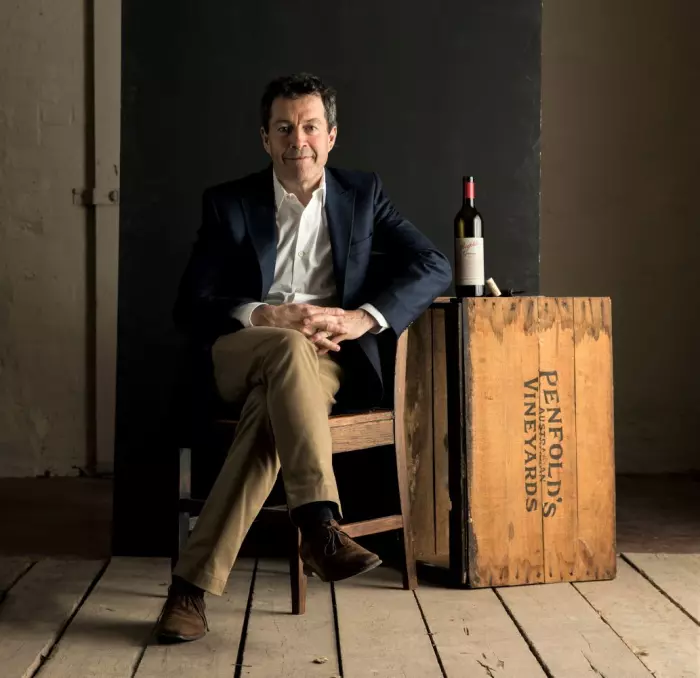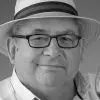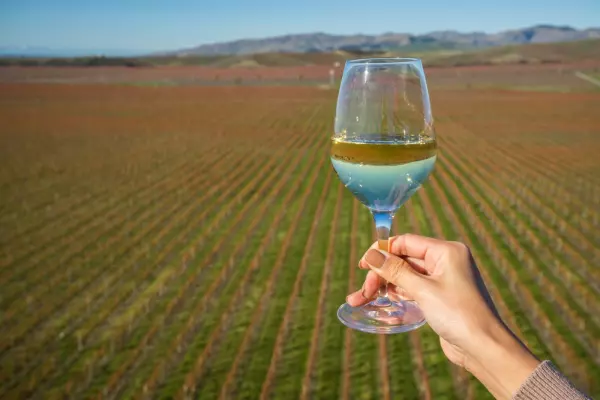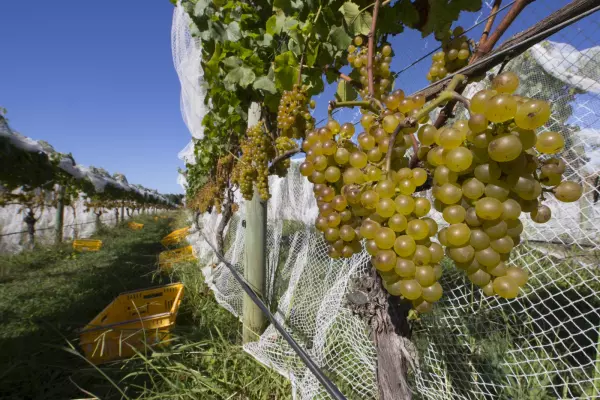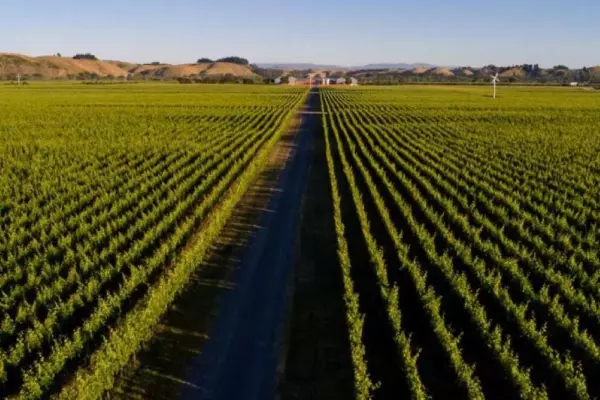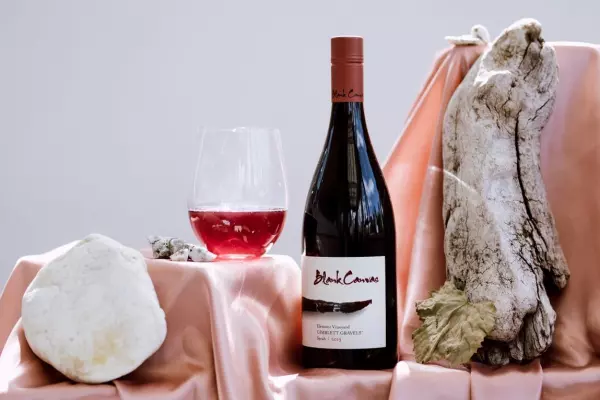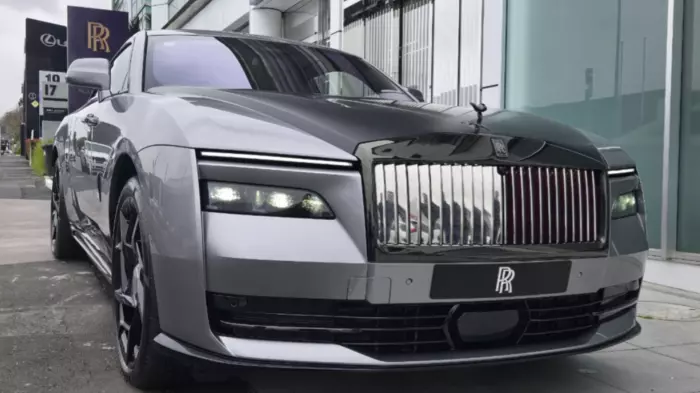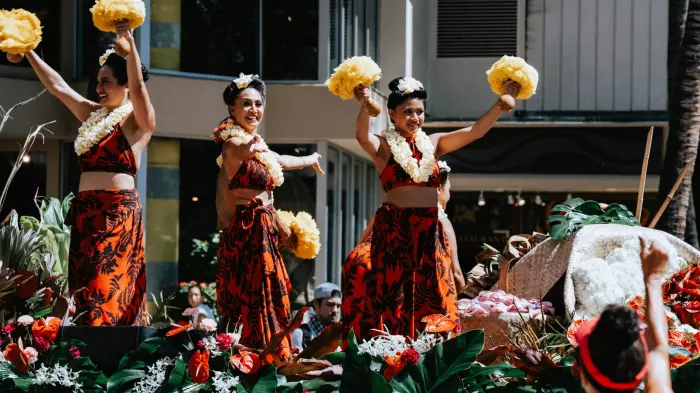The annual “Penfolds collection” tasting reminds me of Russia’s Victory Day Parade or perhaps Kim Jong-un’s annual show of strength in North Korea. “If you’ve got it, flaunt it” is the battle cry.
Sadly, spoilsport covid-19 prevented my usual trip across the Tasman and the opportunity to sample an aged classic or two from the depths of Penfolds’ seemingly bottomless wine cellar. Two memorable examples that stood out at previous tastings were the 1953 Penfolds Grange and the 1962 Bin 60A.
Instead of crossing the Ditch, a handful of wine critics assembled at the new Park Hyatt Auckland hotel in the waterfront’s Wynyard Quarter and interacted with Penfolds’ chief winemaker, Peter Gago (pictured above), via a large screen as we tasted our way through the three whites and nine reds that make up Penfolds’ Top 12. They were:
Penfolds 2020 Bin 51 Eden Valley Riesling, $42.99, has the weight and richness of a good Alsace riesling, with lime/citrus, white flower, apricot and saline/oyster shell flavours. It’s still very youthful but delicious nonetheless, and has at least a couple of decades ahead of it, given careful storage.
Penfolds 2017 Bin 311 Chardonnay, $37.99, is from three “cool” regions: Tasmania, Adelaide Hills, and Tumbarumba (southern New South Wales). It’s dubbed “Baby Yattarna”, and yet I think it trails Penfolds’ Yattarna in intensity and complexity. Bin 311 does represent good value, however, and offers moderate cellaring potential.
Penfolds 2018 Bin 138 Barossa Valley Shiraz Grenache Mataro, $49.99, is an elegant and appealingly aromatic red that’s fine-boned and supple, with dark berry and roasted chestnut flavours. It offers good value at this price.
Penfolds 2018 Bin 128 Coonawarra Shiraz, $49.99, is a weighty but elegant shiraz with ripe plum, dark berry, cocoa powder and subtle spice/anise/pepper and flavours, and a hint of floral tones, too. This is a wine that has always over-delivered.
Penfolds 2018 Bin 28 Shiraz, $41.99, is of a style that was first produced in 1959 from a Barossa Valley vineyard called Kalimna. Nowadays, the grapes are sourced from many vineyards and regions, yet somehow the quality of Bin 28 has remained fairly consistent. It is good value at this price.
Penfolds 2018 Bin 150 Marananga Shiraz, $99.99, is made from grapes grown near Seppeltsfield in the centre of the Barossa Valley. Described by Peter Gago as “a contemporary shiraz alternative”, it is a big, concentrated red with dried fruits/Christmas cake, vanilla, coconut and raspberry flavours. It will appeal to wine drinkers who appreciate generously proportioned shiraz.
Penfolds 2018 Bin 407 Cabernet Sauvignon, $99.99, defines cabernet sauvignon with its cassis, cedar and olive flavours. It’s a dense, powerful red with a structure of ripe tannins that will promote longevity without making the wine unapproachable in its formative years.
Penfolds 2018 Bin 389 Cabernet Shiraz, $99.99. Disregard everything I write about Bin 389 because I’ve been hopelessly in love with it since tasting a 12-vintage vertical in the early 1990s. It’s often referred to as “Baby Grange”, but I’d take 10 bottles of 389 instead of one bottle of Grange any day. If I were to buy 50 cases of 389 and dress up the wine with Grange corks, labels and capsules, I’m confident that every single buyer would be perfectly happy with the forged wine. This vintage of 389 is one of the best I’ve tasted.
Penfolds 2017 St Henri Shiraz, $139.99, is unique in that it is aged in large, old oak vats, allowing it to develop without any oak character. Gago describes it as “the most old-fashioned shiraz made in Australia”. St Henri is a style that particularly appeals to me when it is fully mature. I try to buy a magnum or two in particularly good vintages, and I’ve put the 2017 on my shopping list.
Penfolds 2018 RWT Bin 798 Barossa Valley Shiraz, $249.99. RWT is described as “Grange’s lieutenant”. For that reason, I bought a case of the first vintage (1997) and the second as an investment. I paid about $75 a bottle for it. It proved not to be a good investment despite increasing in value threefold, because, with the help of friends, I’ve drunk nearly every bottle. This is a terrific vintage.
Penfolds 2018 Yattarna Chardonnay, $169.99. Billed as “white Grange” when first released in 1998, this multi-district blend focused on using the very best chardonnay from cool regions. The result is very impressive, although I’d like to see a head-to-head tasting with one or two of New Zealand’s best chardonnays. It’s surprisingly good now but promises to develop spectacularly.
Penfolds 2016 Grange, $979.99. From an unbroken line of vintages starting with the experimental 1951, Grange is the unchallenged King of Australian wine. Are there better wines? Yes. Does Grange deserve to be top dog? Probably not. But with careful nurturing from Penfolds’ winemaking and marketing teams, it is a heck of a long way ahead of whatever is in second place. Penfolds’ 2016 Grange is a terrific wine. It is constructed for the long game – Peter Gago believes it will last 60 years if stored well. Grange is Penfolds’ most powerful weapon. It is to Penfolds what an intercontinental ballistic missile is to Vladimir Putin.
Bob’s Top Picks
Investment Wine

Penfolds 2016 Grange, $979.99
This is a gilt-edged investment wine, particularly in these uncertain times. If you do decide to invest in a bottle or two of Grange, you should also invest in temperature-controlled storage conditions, which will greatly extend the life and value of all wine.
Weekend Wines
Top White

Penfolds 2017 Bin 311 Chardonnay, $37.99
First vintage in 2005. This is one of the best I’ve tasted. Taut, vibrant, edgy chardonnay with mineral/struck flint, citrus, toast and spice flavours. Will benefit from a few years in bottle but is certainly approachable now.
Top Red
Penfolds 2018 Bin 389 Cabernet Shiraz, $99.99
Matured in the same barrels that held the previous vintage of Grange. Seductively dense with dried fruit/Christmas cake, chocolate/mocha and liquorice flavours, and much more. A real powerhouse with great cellaring potential. Bin 389 is the second most “cellared” wine in Australia (Grange is first).
Read more from Bob at therealreview.com


